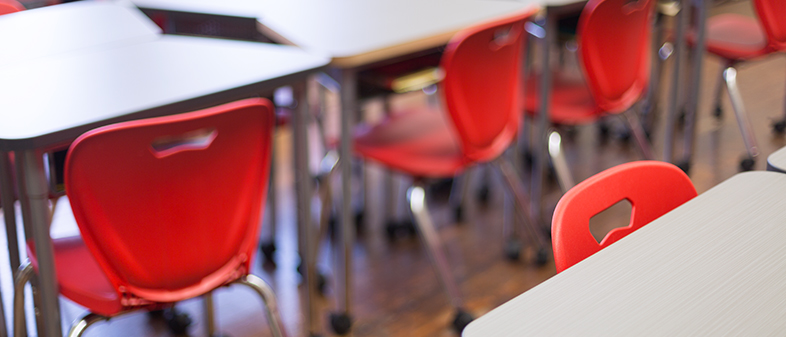
Creating an environment that supports its activities can have a direct effect on student interest and engagement. Corporations and organizations realize this and invest heavily in hiring planners and designers to optimize the space in their buildings. We encounter a variety of deliberately planned environments regularly in our daily lives. For example, fast food restaurants narrow the distance between tables to maximize the number of diners who can squeeze in, eat quickly and leave. Likewise, the choices we make about learning environments impact the ways students will interpret their learning experiences.
Environments facilitate learning activities
It is important to create a space that matches educational goals because learning environments heavily influence students' activities. When classrooms consist of forward-facing desks arranged in rows, students know they'll have a lecture-based lesson. When workspaces are arranged in clusters, students expect to collaborate with peers. Likewise, learning environments with mobile furnishings let students participate in activities that allow and encourage rearrangements of workspaces and seating. In this way, the implications that arise from environmental choices make it important for educators to thoughtfully consider layouts and furnishings.
Environments create learning opportunities
Choices about layouts, furnishings, and equipment make different learning opportunities possible. Learning environments with spacious walkways allow students to move about the room to access materials or media. Mobile equipment allows students and teachers to wheel resources to wherever they're needed. Brainstorming becomes more fluid and presentations more efficient with mobile whiteboards and easels. Mobile storage buys time for students and educators to access materials and clean-up project work without hassle. Inviting furnishings create relaxing reading spaces or comfortable places for students to gather. New opportunities appear for student engagement when soft seating is placed in common areas. Furniture electrical outlets and USB connectors let students work as long as they need, without stopping to charge equipment.
Environments can inspire students and teachers
Even simple environmental choices can boost student motivation and feelings of self-worth. Color can create warm, vibrant spaces that energize students or cool spaces that allow students to calmly consider their work. School colors communicate pride in the school and its students. Offering a variety of seating options lets students choose what's best for them, honoring their individual needs and preferences.
Successful learning environments are designed to motivate students and teachers to do their best work. When planning learning spaces, educators have the opportunity to acknowledge students' value and individuality. When we help schools consider their spaces, the School Outfitters team is privileged to contribute to the success of teachers and students.


